Mesa Verde, Colorado
Steven Dutch, Professor Emeritus, Natural and Applied Sciences,
Universityof Wisconsin - Green Bay
Mesa Verde National Park is a World Heritage Site.
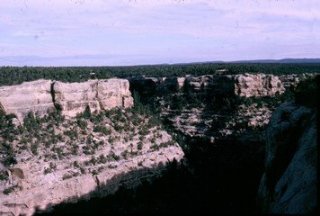 |
The most impressive ruins are far back on a mesa capped by the Cliff House Sandstone. Below that is the Menefee Shale with the Point Lookout Sandstone below that. The lowest unit in the park is the Mancos Shale. All are Cretaceous. |
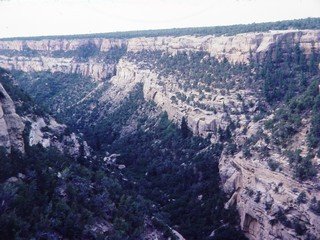 |
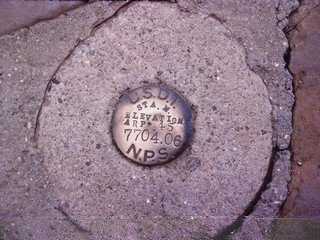 |
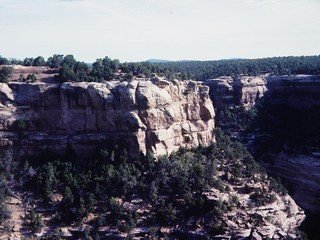 |
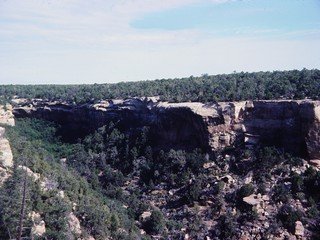 |
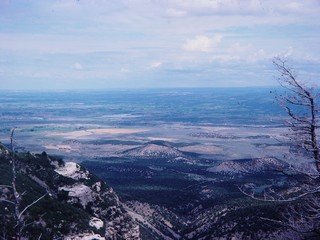 |
Looking south into New Mexico. Shiprock is clearly visible from Mesa Verde (though not in this picture). |
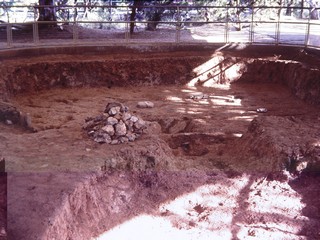 |
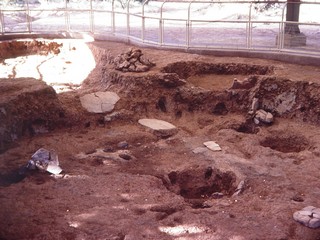 |
| Above: the first excavations we came to were these small pit dwellings. We had already seen similar ones and my wife was not impressed at driving far onto a remote mesa to see these. | Then we came to Cliff Palace (below). It's not visible until you walk far out onto a promontory and look back under the cliff. My wife came out, still somewhat grumbling, then her jaw dropped. "You didn't tell me there was a city under there!" |
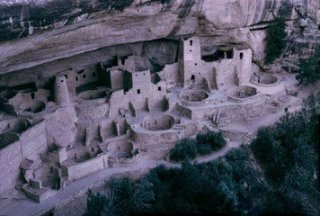 |
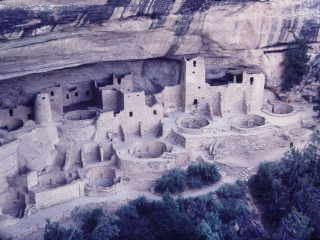 |
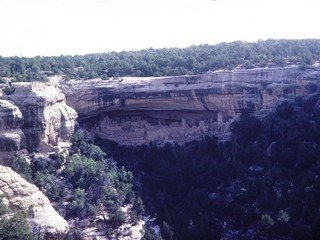 |
Left: distant view of Cliff Palace. The round structures in the
above and other pictures are kivas or ceremonial chambers. Below: Square Tower House is four stories tall and is the surviving portion of a once much larger building. |
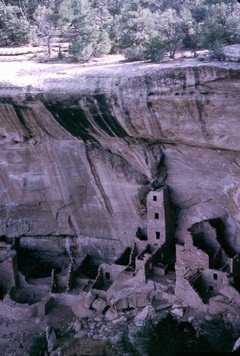 |
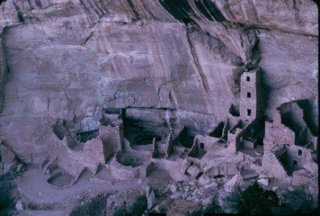 |
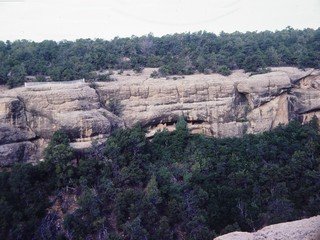 |
Left and below: there are dozens of cliff dwellings tucked away
in virtually every overhang in the cliffs. It must have been a nerve
wracking place to raise kids. You do have to wonder, for those inclined to believe in the intrinsic goodness of humanity, why, on a continent rich in natural resources and with only a few million inhabitants, people would have to build in such dangerous places for protection. |
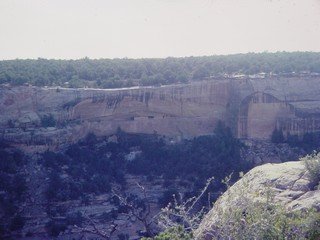 |
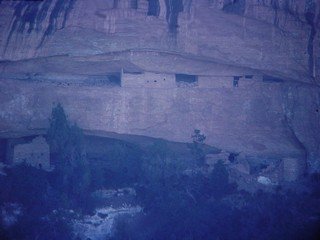 |
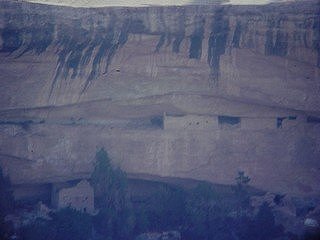 |
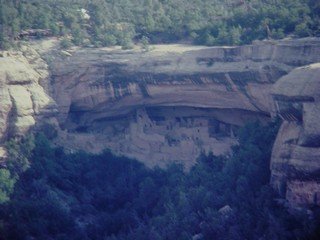 |
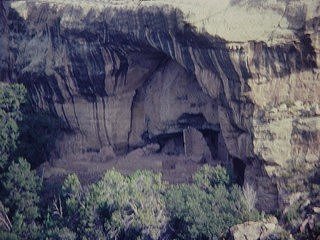 |
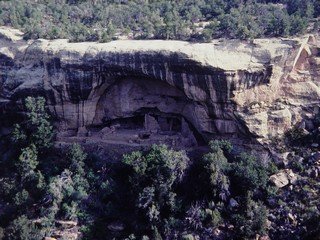 |
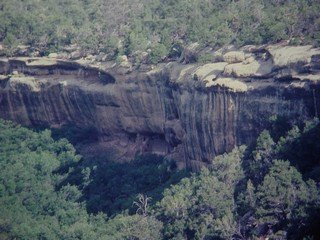 |
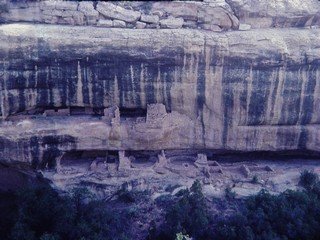 |
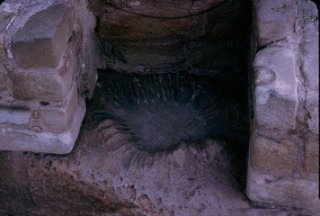 |
When symbolism goes awry. This feature has been identified as a "sun symbol" and maybe it was protected and venerated as such, but it's clearly an example of natural chemical weathering. This marking gave its name to the unfinished building around it, the Sun Temple. The Sun Temple was built in the late 1200's and never finished. |
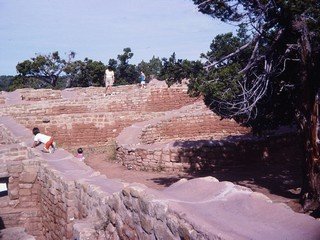 |
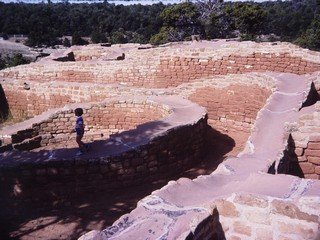 |
| Right and below: Far View Ruins. The mesa top ruins are generally
believed to predate the cliff dwellings. Roughly they are contemporaneous
with the Crusades. Right: it would be interesting to know why trapezoidal openings are so widespread in the Americas. |
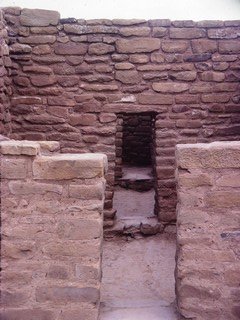 |
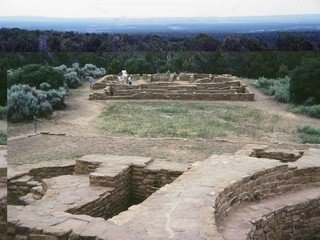 |
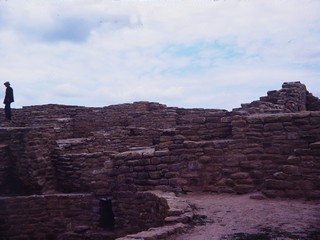 |
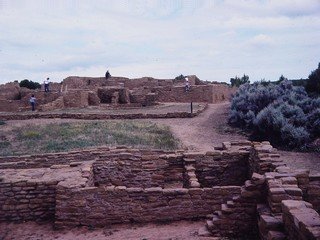 |
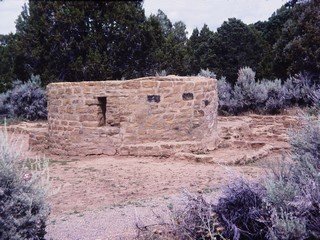 |
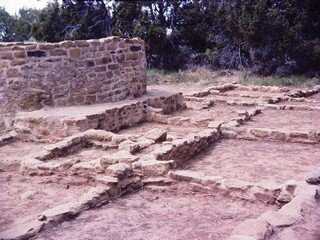 |
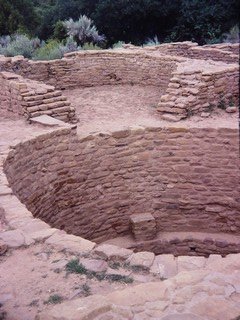 |
| At right are two kivas. Originally they were roofed over and accessible
through the roof. Below: Far View Reservoir has been designated a national Historic Civil Engineering Landmark by the American Society of Civil Engineers. The inlet of the reservoir is visible at lower right. |
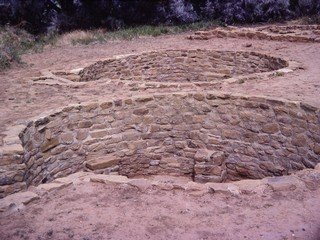 |
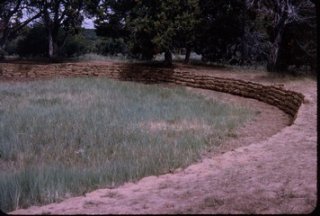 |
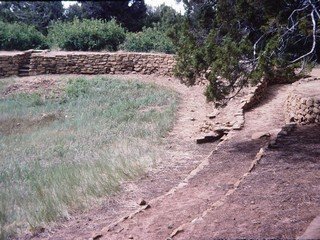 |
Return to Virtual FieldTrips Index
Return to Historic Sites Index
Return to Professor Dutch's Home Page
Created 22 June 2007, Last Update 04 June 2020